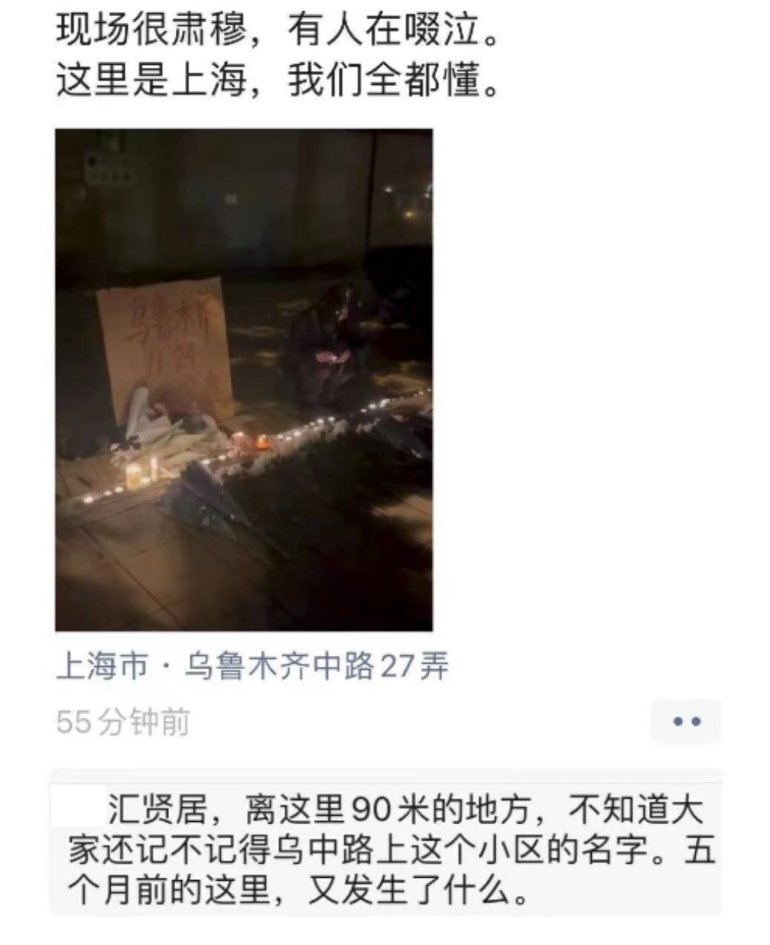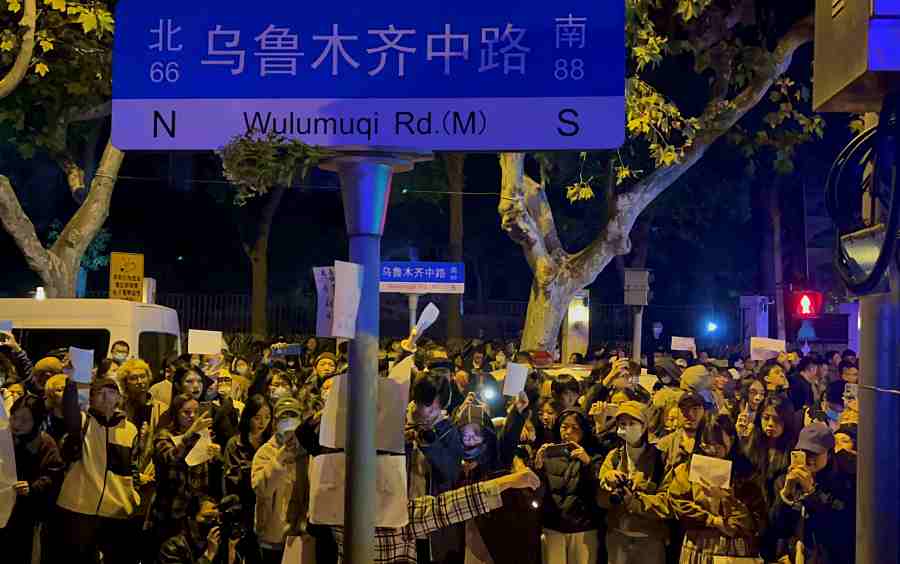Mon 28 November 2022:
Chinese censors are scrambling to scrub references to protest codewords and demonstration hotspots like Xinjiang.
Taipei, Taiwan – Chinese internet users and government censors are engaged in a cat-and-mouse game to control the narrative around the country’s anti-“zero COVID” protests.
Protests began in Urumqi, the capital of the far-western Xinjiang region, on Friday following the deaths of 10 people in an apartment block fire before spreading over the weekend to major cities including Beijing, Shanghai, Nanjing, Wuhan and Chengdu.
The protests in Urumqi erupted after footage posted on social media showed fire trucks spraying water from too far away to reach the apartment building, with internet users claiming authorities could not get closer due to pandemic barricades and cars that had been abandoned by people who had been quarantined.
Videos and photographs of the protests quickly circulated on Chinese social media platforms such as WeChat and Weibo, where they received tens of thousands of views before being deleted by government censors.
The acts of defiance shared online included scenes of people tearing down barricades, calling for the resignation of Chinese President Xi Jinping, and holding up blank white pieces of paper as a symbol of protest.
By Monday, Chinese social media appeared to have scrubbed searches for protest hotspots like “Xinjiang” and “Beijing”, while posts with oblique phrases like “I saw it” – a reference to an internet user having seen a recently deleted post – were also censored.

“As the fissure widens between the lie and the truth, even what cannot be said or seen becomes immensely symbolic,” David Bandurski, co-director of the China Media Project, told Al Jazeera.
“It can punch right through the veneer. And this is what we’ve seen over the past few days. The words, ‘I saw it’, marking the void in the wake of a deleted protest video, can become powerful. Or students protesting on campus can hold up blank sheets of paper and they speak volumes.”
Other users have taken to using seemingly unrelated and uncensored phrases to express their feelings, Zhang said, using “repetitions of ‘good’, or ‘well done’, or ‘win’ as a sort of sarcastic or passive-aggressive way of highlighting the inability for Chinese people to voice any form of criticism.”
The use of euphemisms is a common tactic of Chinese netizens to evade government censors, with abbreviations and homonyms often standing in for banned words. During China’s “Me Too” movement in 2018, many internet users posted under the hashtag “rice bunny” – which when said aloud in Mandarin Chinese sounds like “me too” – after the original hashtag was banned.
undefined pic.twitter.com/gIYw3try1R
— 小中大字母圏 武汉外围/成都外围/重庆外围/杭州外围/上海外围/苏州外围/郑州外围/三亚外围 (@4QzQ9IZjKoysjy5) November 28, 2022
This time, China’s censors have also taken note of how much information is circulating on Western platforms such as Twitter, which in recent days has been flooded with pornography and adverts for sex workers by bots and pro-government accounts.
Twitter has lost thousands of employees to staff cuts and resignations since Elon Musk, a self-described free speech absolutist, took over the social media platform last month. The staff exodus has included numerous employees responsible for moderation and misinformation policies, including the platform’s entire human rights team, which Musk fired within days of his $44bn purchase of the social media giant.
Residents of Urumqi, where the recent protests began, have lived under harsh restrictions since August 10, in what is believed to be China’s longest continuous lockdown.
In late March and early April, a five-day “circuit breaker” lockdown in Shanghai was extended to two months, prompting food shortages and rare displays of public discontent.
China is the last country in the world sticking to a “zero-COVID” policy aimed at stamping out flare-ups of the virus at almost any cost. The strategy, which relies on lockdowns, border controls and mass testing, has kept cases and deaths low compared with elsewhere, but inflicted serious economic and social costs.
By
___________________________________________________________________________________________________________________________________
FOLLOW INDEPENDENT PRESS:
TWITTER (CLICK HERE)
https://twitter.com/IpIndependent
FACEBOOK (CLICK HERE)
https://web.facebook.com/ipindependent
Think your friends would be interested? Share this story!





